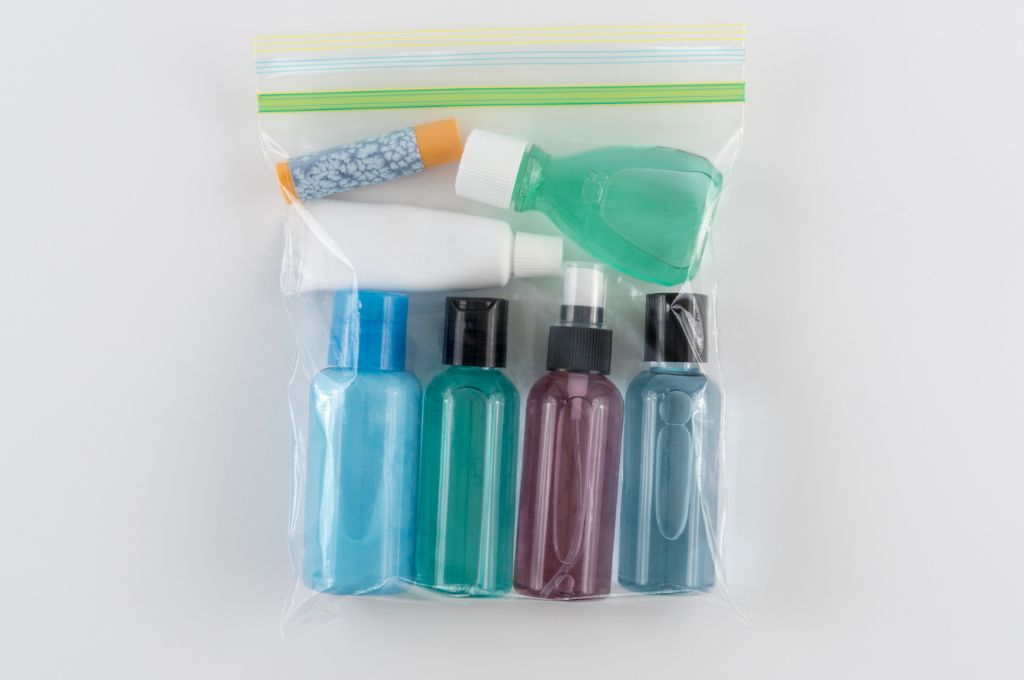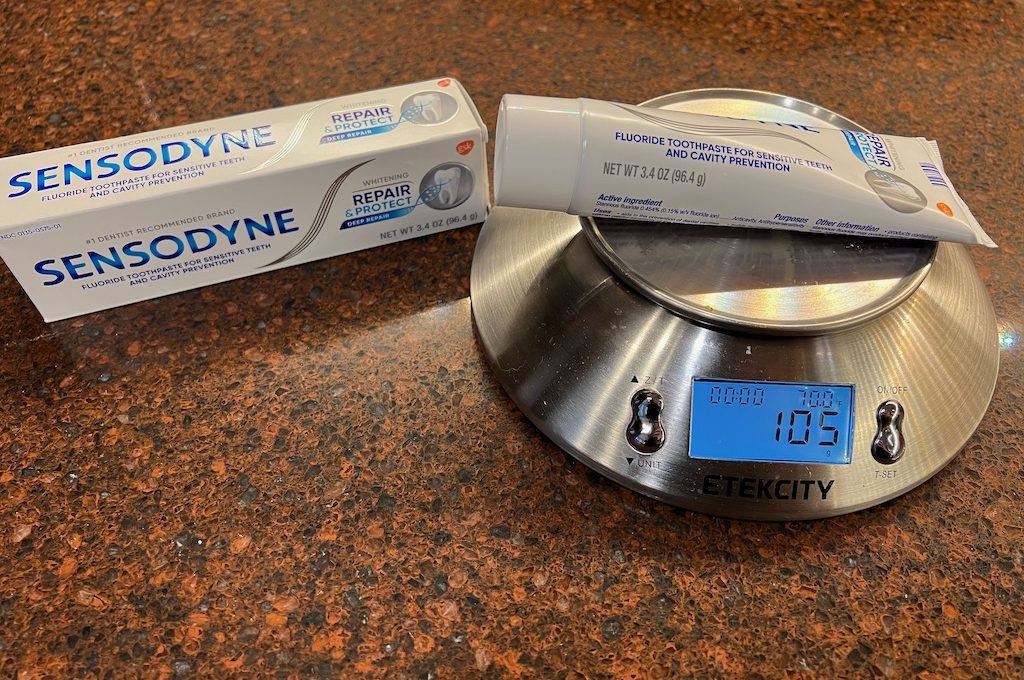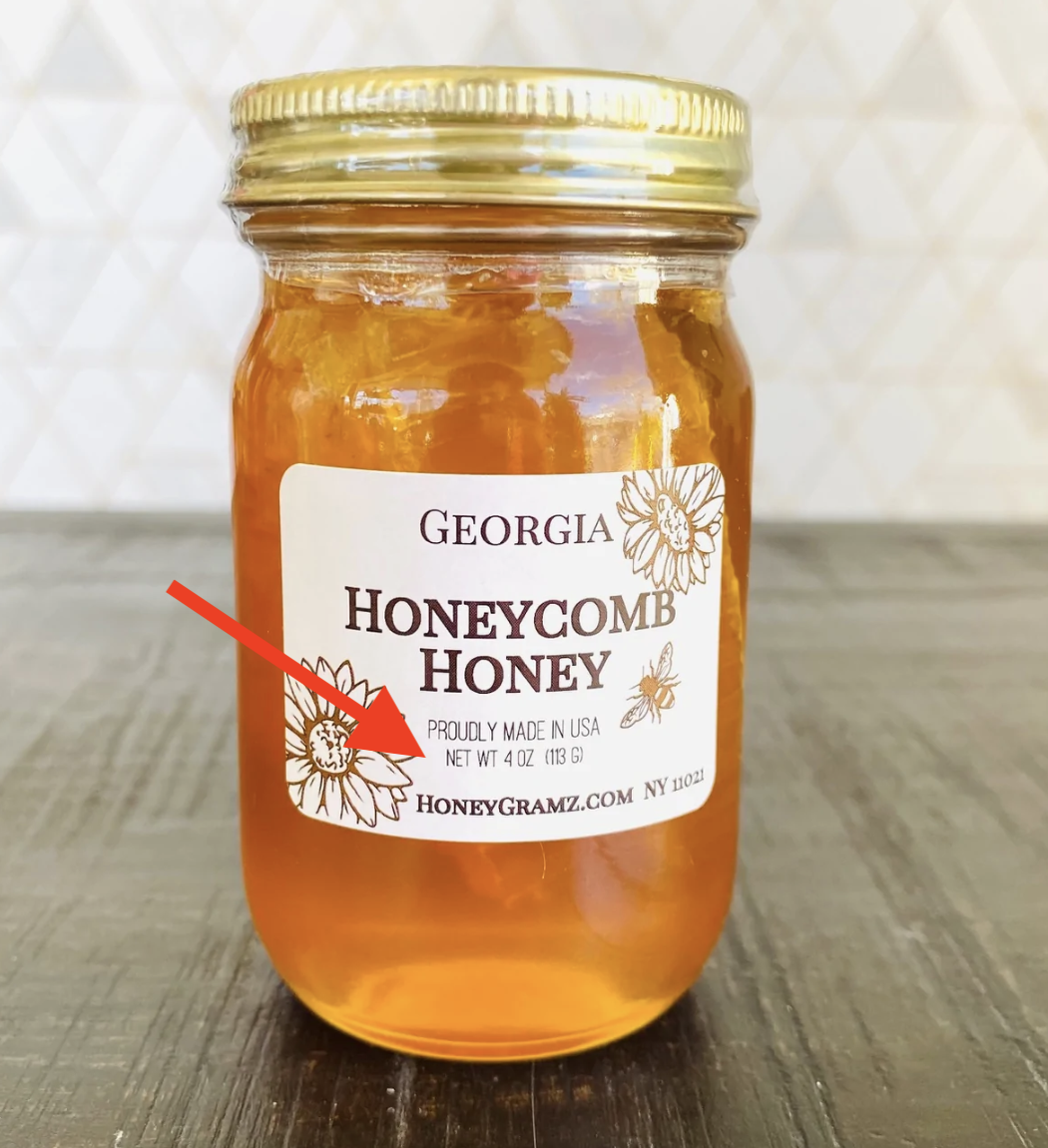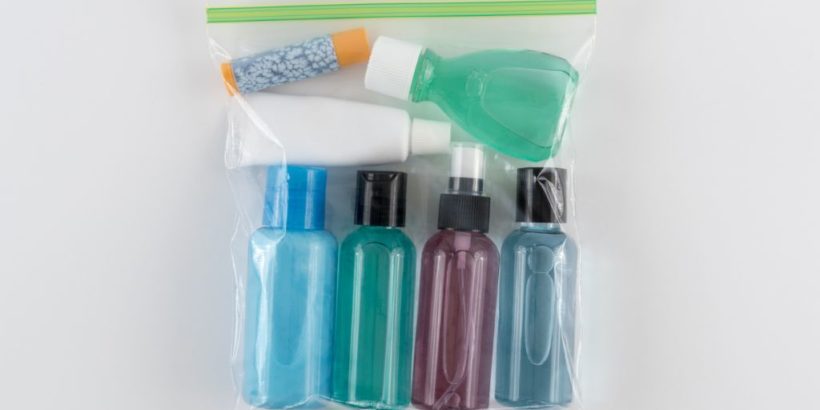If you like to travel it really helps to have a good grasp on the conversion between ounces and 100 ml.
Knowing how mass and volume relate to these measurements will help you comply with the TSA liquids rule and just make life easier for everybody.
Below, I’ll walk you through some conversions on ounces to 100 ml and give you some tips for dealing with TSA when deciding to bring through your liquids.
Table of Contents
Why travelers need to know ounces to 100ml
If you know your conversions, you’ll be able to:
- Better shop around for items to take with you on your travels without the risk of having to throw stuff away.
- Better persuade a TSA agent to refrain from throwing out your items
But most of all, you’ll know the difference between mass and volume.
I know to many people this seems obvious but a lot of us never really got a good grasp of this in school.
Mass is related to weight and can be measured in grams or ounces (among other things).
(I call these type of ounces weight ounces in this article to make things 100% clear).
Volume is related to size and can be measured in liquid/fluid ounces or milliliters.
It’s also popular to measure volume using the household measurement system where one cup equals 8 fluid ounces.
I talk about the TSA liquids rule below but just keep in mind that it applies to volume — not mass.
Now that we got the basics out of the way, let’s start off with a quick refresher of the liquids rule so that things will make a little more sense.

TSA Liquids 3-1-1 Rule
The TSA Liquids 3-1-1 Rule states that you can only bring liquids in containers no larger than 3.4 liquid ounces (100 milliliters) and that all of your liquid containers must fit “comfortably” into one clear, quart-size bag.
TSA uses 3.4 ounces because it’s easier to remember but really 100 ml comes out to 3.3814 fluid ounces.
Anyway, whenever you’re going through the checkpoint, you’ll have to remove your quart-size bag from your luggage (unless you have TSA Pre-Check) so that your liquids can be screened separately.
TSA has a pretty broad definition of what is considered a “liquid.”
Any types of creams, gels, lotions, etc., are all considered liquids.
Basically anything that is usually poured, pumped, scooped, squeezed, slurped, or mashed will be considered a liquid for TSA purposes.
The big caveat here is that items that are considered liquids don’t all have the same density.
This means that the net weight that you see on packaging does not need to be 3.4 ounces or under in order for you to transport the contents of that container through TSA.
For example, let’s say that you had a package of toothpaste that was 4.5 ounces in net weight.
Given the density of toothpaste which is 1.3 g/ml, you could fill up a 3.4 fluid ounce container to the brim with your 4.5 weight ounces of toothpaste.
On the flipside, if something is not very dense you might be surprised how quickly it fills up 3.4 fluid ounces.
For example, whipped cream only takes about 1.75 weight ounces to fill up a 3.4 liquid ounce container.
This is because only water and liquids with a similar density have a ratio that works out perfectly to: 1 fluid ounce = 1 weight ounce (28.3495 grams).
Substances with other densities don’t work out like that.

Ounces to 100ml conversion chart
To help you make easy conversions from weight ounces to 100 ml (or ~3.4 fluid ounces), we’ve put together a helpful chart below.
Keep in mind that sometimes the conversion will differ based on the exact composition of your product. But these numbers should at least be in the ballpark.
| Item | Weight | Volume |
| Almond Butter | 3.81 ounces | 100ml |
| Almond Milk | 3.92 ounces | 100ml |
| Applesauce | 3.63 ounces | 100ml |
| Beer | 3.81 ounces | 100ml |
| Butter | 3.21 ounces | 100ml |
| Buttermilk | 3.60 ounces | 100ml |
| Chocolate Sauce | 4.16 ounces | 100ml |
| Coconut Oil | 3.21 ounces | 100ml |
| Cooking Oil | 3.10 ounces | 100ml |
| Corn Syrup | 4.87 ounces | 100ml |
| Ghee | 3.56 ounces | 100ml |
| Gravy | 3.39 ounces | 100ml |
| Heavy Cream | 3.51 ounces | 100ml |
| Honey | 4.87 ounces | 100ml |
| Ice Cream | 1.95 ounces | 100ml |
| Jelly | 4.39 ounces | 100ml |
| Lard | 3.24 ounces | 100ml |
| Light Cream | 3.57 ounces | 100ml |
| Liquid Soup | 2.82 ounces | 100ml |
| Maple Syrup | 4.69 ounces | 100ml |
| Margarine | 3.39 ounces | 100ml |
| Mashed Potatoes | 3.42 ounces | 100ml |
| Mayonnaise | 3.21 ounces | 100ml |
| Milk | 3.63 ounces | 100ml |
| Nutella | 4.44 ounces | 100ml |
| Olive Oil | 3.24 ounces | 100ml |
| Peanut Butter | 3.85 ounces | 100ml |
| Petroleum Jelly | 2.93 ounces | 100ml |
| Ranch Dressing | 3.56 ounces | 100ml |
| Salsa | 3.88 ounces | 100ml |
| Sour Cream | 3.45 ounces | 100ml |
| Soy Milk | 3.63 ounces | 100ml |
| Tabasco Sauce | 3.35 ounces | 100ml |
| Tomato Soup | 2.22 ounces | 100ml |
| Vegetable Oil | 3.25 ounces | 100ml |
| Water | 3.38 ounces | 100ml |
| Whipped Cream | 1.75 ounces | 100ml |
| Yogurt | 3.74 ounces | 100ml |
These calculations are based on an “avoirdupois ounce” which weighs 28.3495 grams. So don’t get that confused with a troy ounce weighs 31.1035 grams. Read more about those here.
Sources for the chart include here and here.

What to do with the information
Knowing how weight ounces translate to liquid ounces and milliliters is really helpful.
Let’s say you wanted to bring a 4 ounce container of 100% Raw Georgia (USA) Wildflower Honey Comb + Honey through airport security.
If you know your conversions then you would know that 4 ounces of honey occupies less than 3.4 liquid ounces and could (possibly) be brought on a plane.
But there are two different routes with TSA that you can go with your knowledge on conversions.

Safe route
First, you can take the safe route.
The safe route is when you transfer your liquid items out of the original container you purchased it in and into a TSA approved liquid container.
This is very doable for certain types of things like alcohol but less practical with something like toothpaste which you would like to just leave in the original container.
This is the safe option because TSA agents should allow your liquids to go through without an issue: 1) as long as they are in a container 3.4 ounces or smaller and 2) not hazardous.
If you know your conversions, you’ll also be able to plan out how many containers you can fill up and should be able to do so pretty accurately.
The more risky option
The more risky route would be to just leave your liquids in the original container.
Let’s say that you had a container full of that delicious Raw Georgia Honey that weighed 4 ounces.
That amount of honey would be under 100 ml.
Assume the honey is filled to the top of the container, that means that you’d have a TSA compliant liquid container because it would have volume no larger than 100 ml or 3.4 fluid ounces.
If the container stated fluid ounces on the label you could show that to a TSA agent and there probably would be no issue.
The problem is that the packaging for our Raw Georgia Honey just says “NET WT 4oz.”
A TSA agent who is not well-informed on volume versus mass, and who is working in a potentially hectic security line, may not make the connection.
In this case, you could tell them “the container shows ounces in weight but it actually holds less than 3.4 fluid ounces.”
Whether or not that would actually work is another question.
But if you know your conversions at least you can have them in your back pocket in the event you need to clarify why you are compliant with the liquids rule.
Final word
Overall, it’s really helpful to know the relationship between ounces/grams and weight and liquid ounces/milliliters and volume.
This is especially true if you plan on bringing items that fall under the TSA liquids category but are not simply water that has a perfect 1:1 ratio of weight to liquid ounces.
Daniel Gillaspia is the Founder of UponArriving.com and the credit card app, WalletFlo. He is a former attorney turned travel expert covering destinations along with TSA, airline, and hotel policies. Since 2014, his content has been featured in publications such as National Geographic, Smithsonian Magazine, and CNBC. Read my bio.

